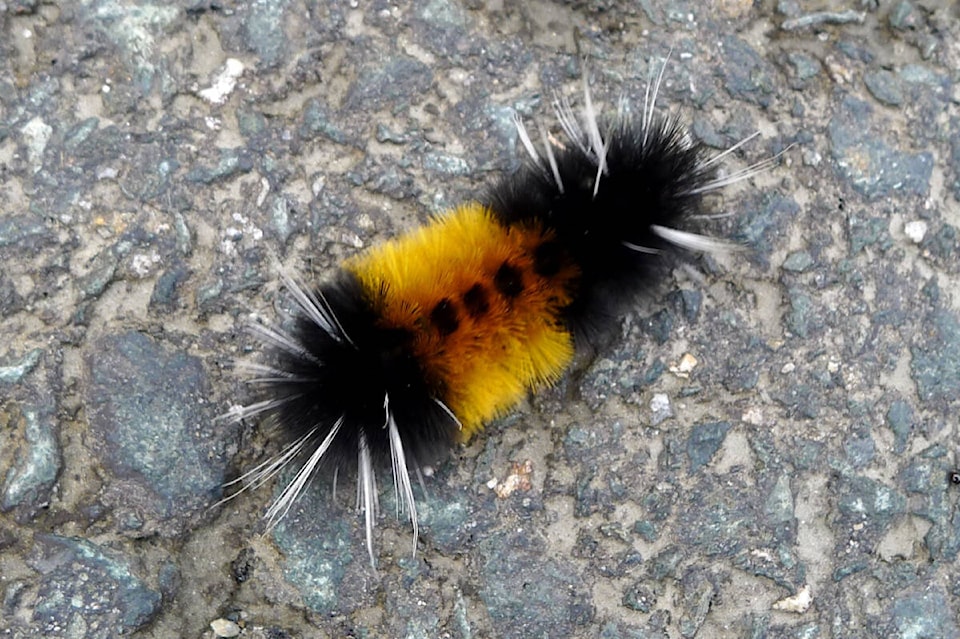While camping on Haida Gwaii last week, I was fascinated by seeing so many woolly bear caterpillars with long black hairs at the head and tail end and separated by a band of long yellow to orange hairs.
Dotted amongst the black hairs are tussocks of longer white lashes. Some caterpillars, but not all, also have spots (tussocks) of black hair on each segment among the yellow ones. The caterpillars are the larval stage of the spotted tussock moth (Lophocampa maculata), so called because of the tussocks of hairs.
Tussock moth caterpillars can sting, but this caterpillar does not because it is not a true tussock moth, but rather it is a ‘tiger moth.’
The combination of colour and pattern of the hairs is a signal to predators that the caterpillars could be toxic. The hairs of a true tussock moth are prickly and can sting releasing a toxin. However, this caterpillar is not toxic. Instead, it exhibits Batesian mimicry.
By imitating the colour and pattern of hairs of a toxic species (e.g., a true tussock moth), it is warning potential predators to leave it alone. Through a process of trial and error, it does not take bird predators long to figure out the disguise.
The woolly bears were everywhere and all marching very intently on going someplace, although the direction did not always make sense. One we watched was making a beeline up the beach toward the forest, whereas another was heading down the beach to tidewater. Others were crawling over the salal bushes and along the forest floor.
At this time of the year, they are looking for a place to pupate and hibernate for the winter. However, we could not help wondering if the one determinedly heading for the ocean was not on a suicide mission.
They were quite fascinating to watch as they pursued a dead straight line, regardless of obstacles. Walking over the sandy bumps meant two steps up, one step back (a relatively slow process) and then a more rapid slide down the opposite side. In contrast, moving over rocks and driftwood was a piece of cake for them as they got better traction and moved at a good speed.
The inconspicuous adult moths are brown with tan spots on the forewings. The caterpillars eat the leaves of deciduous trees and shrubs such as alder, aspen, cottonwoods, maples, and willow.
